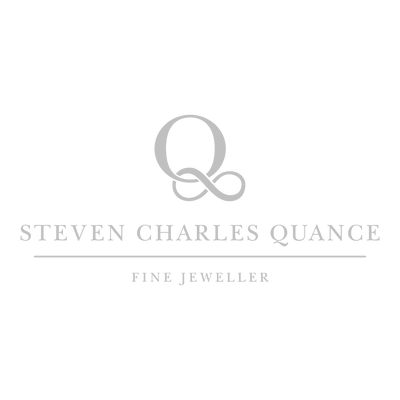Ethical & Sustainable Rings: 10 Most-Asked Questions (Answered)
Want your engagement ring to align with your values? Here Steven Charles Quance explains conflict-free diamonds, lab-grown options, recycled metals and more—so you can choose responsibly without sacrificing beauty.
1) What are conflict-free diamonds?
Conflict-free (ethical) diamonds are mined and traded under strict controls so they don’t finance armed conflict or abuse communities. Certifications and tracked supply chains reduce risk and promote responsible practices across the industry.
2) How can you tell if a diamond is ethically sourced?
Ask for documentation of origin and recognised lab reports. Look for jeweller transparency on labour, environment and chain of custody. Lab-grown diamonds are another ethical route with identical physical and optical properties to mined stones.
3) What is the Kimberley Process?
The Kimberley Process Certification Scheme (KPCS) aims to prevent conflict diamonds entering the market via government oversight and export certificates. While not perfect, it remains a key global framework used alongside broader ethical standards.
4) Are lab-grown diamonds environmentally friendly?
They avoid large-scale mining impacts and can have a lower footprint—especially when produced with renewable energy. Their environmental profile varies by energy source, but they are chemically and optically the same as mined diamonds.
5) Do recycled metals look different?
No—recycled gold, platinum and silver are refined to the same purity as newly mined metal. Choosing recycled metals reduces mining demand without compromising durability or appearance.
6) Which jewellers specialise in ethical sourcing?
Look for clear sourcing policies, recycled metals, lab-grown options and third-party accreditations (e.g., RJC membership). Independent makers and select brands now publish detailed provenance for stones and metals.
7) Is sustainability more expensive?
Sometimes slightly, due to certification and traceability—though lab-grown diamonds and recycled metals are often price-competitive. Many couples value the ethical assurance and lower environmental impact.
8) What’s the difference between “fair trade” and “ethical”?
Fair trade focuses on labour standards and fair pay. Ethical is broader—covering labour, environment, and conflict-free sourcing. An ethical ring might combine recycled metals, lab-grown/conflict-free stones and responsible workshops.
9) Are second-hand or vintage rings sustainable?
Yes—reusing existing pieces is highly sustainable. Vintage/estate rings cut new mining demand and offer unique craftsmanship. Many clients also reset vintage stones into new designs using recycled metals.
10) Are consumers prioritising ethical choices today?
Absolutely. Demand is rising for transparent sourcing, lab-grown diamonds and recycled metals—especially among younger buyers. Clear information empowers couples to choose rings that reflect their values.
Next steps
- Compare mined vs lab-grown in our Ring Builder.
- Want provenance details for a specific stone? Book a free consultation.
- Keep learning: The Ultimate Guide to Engagement Rings.
